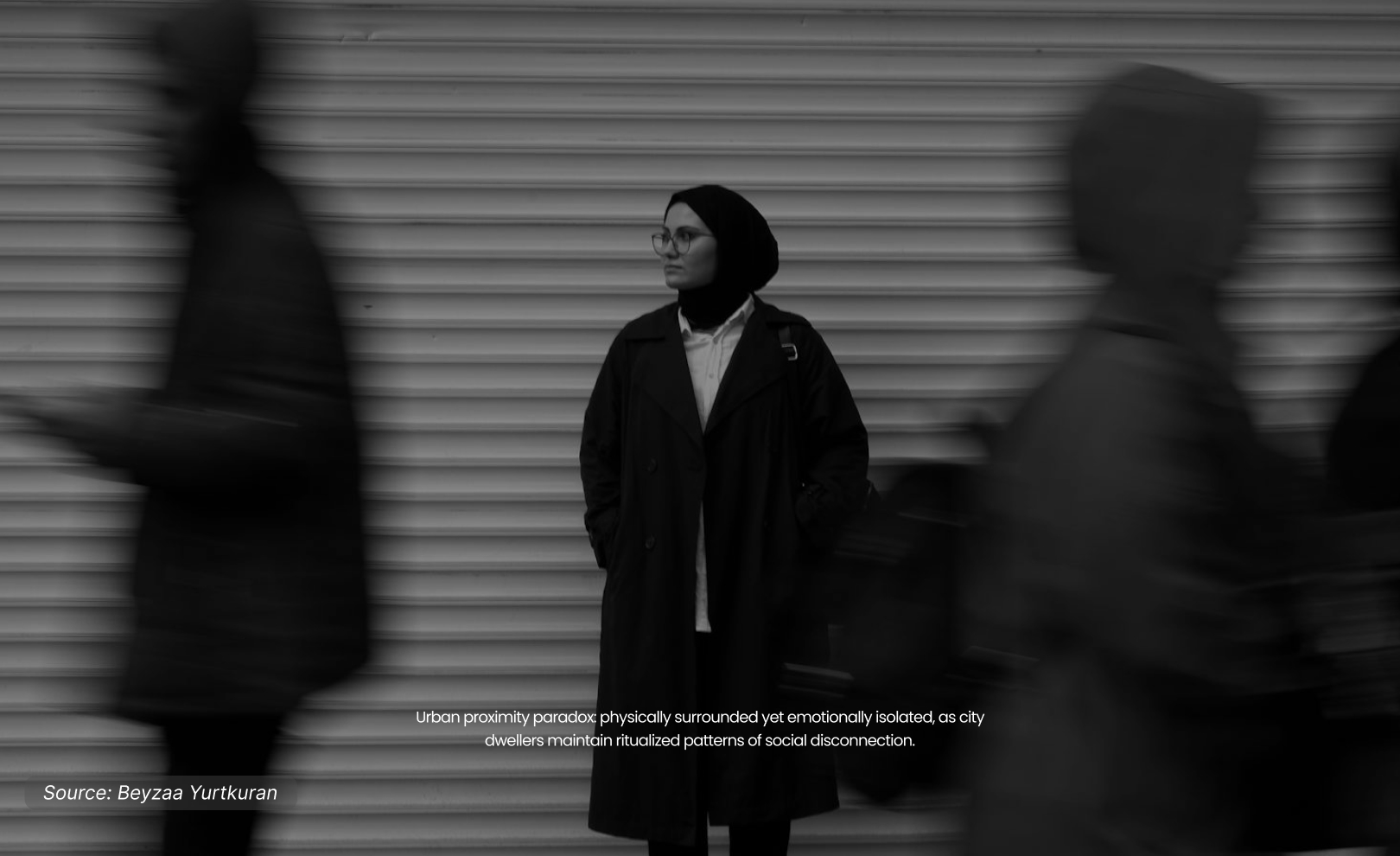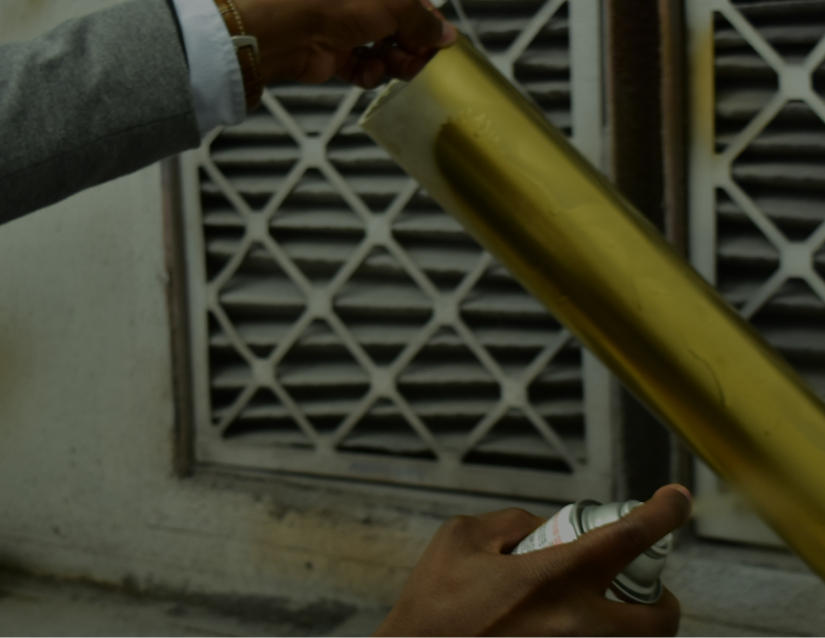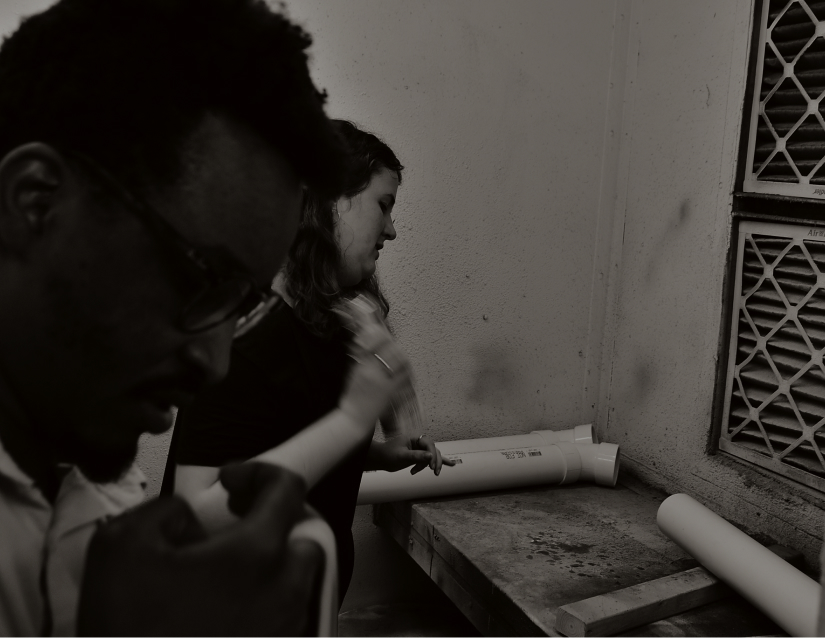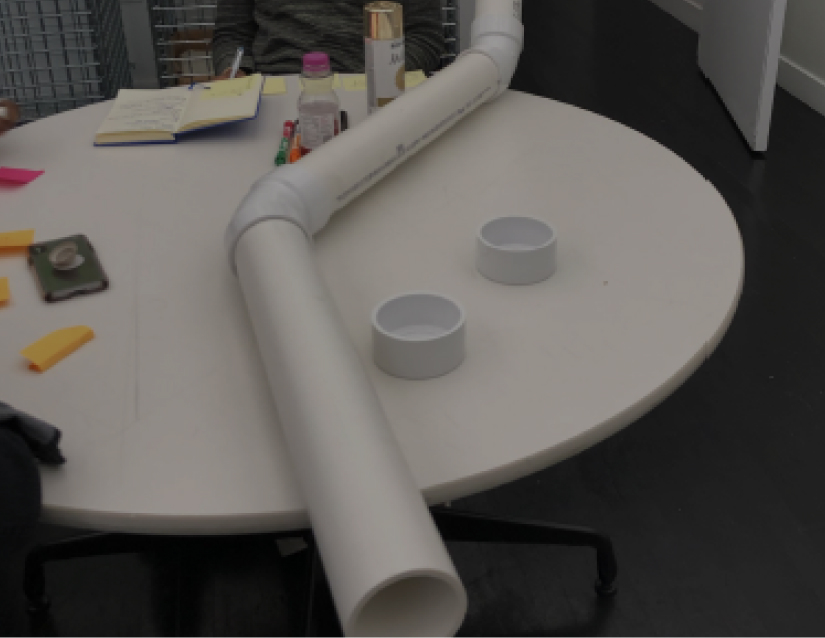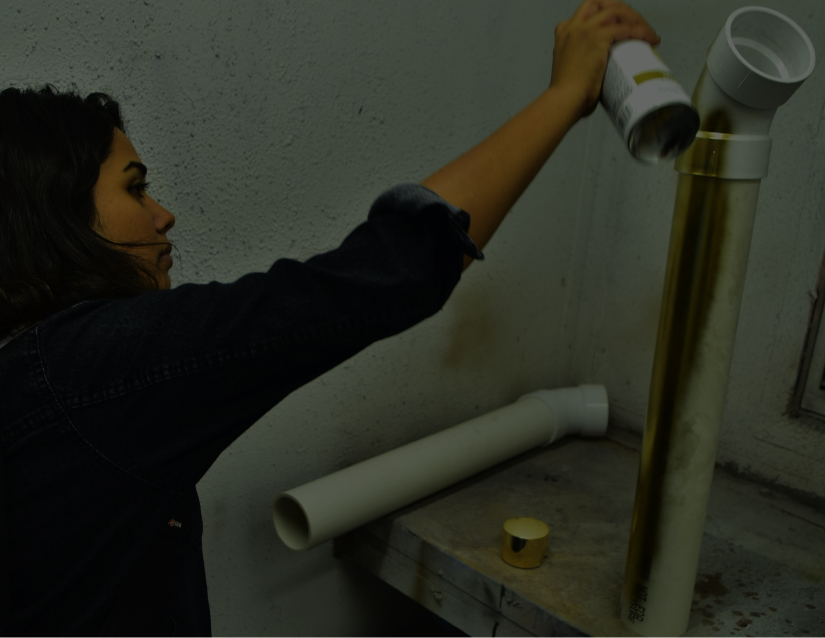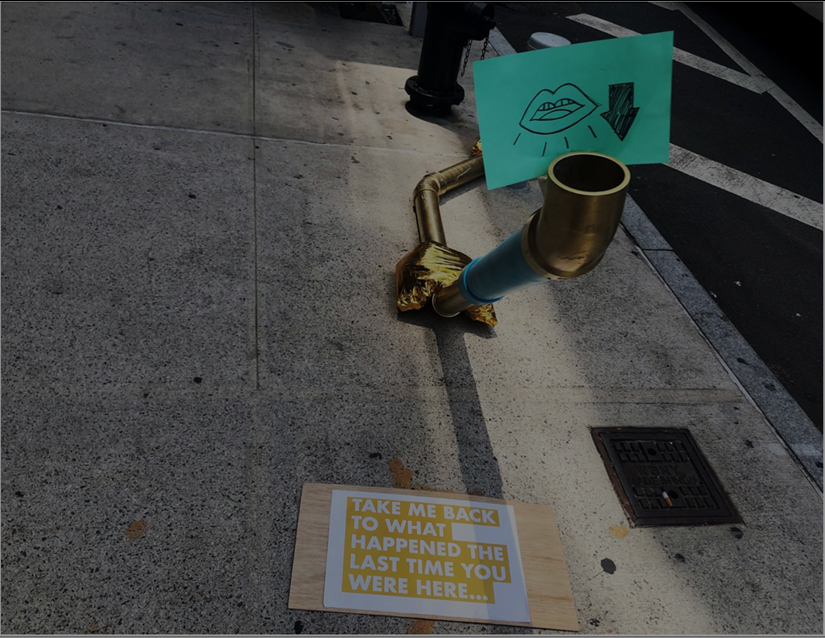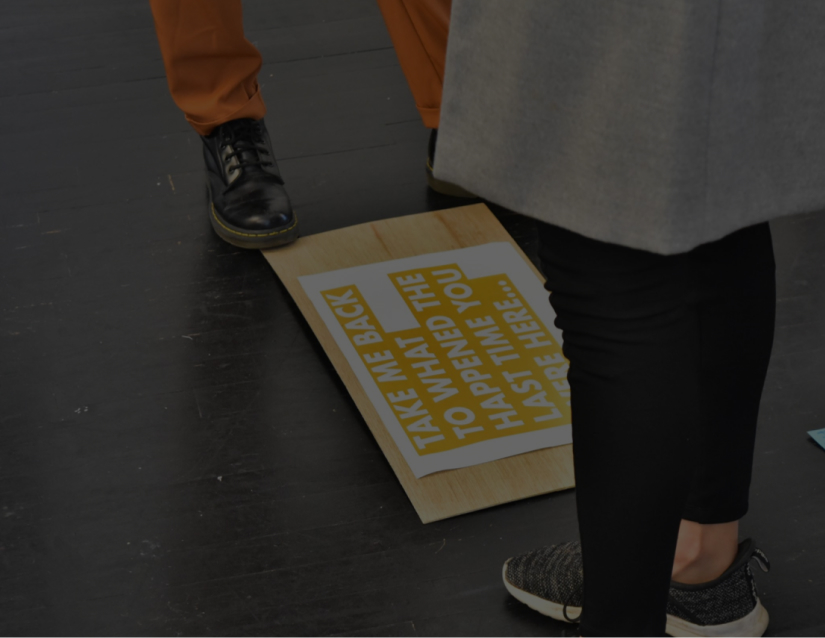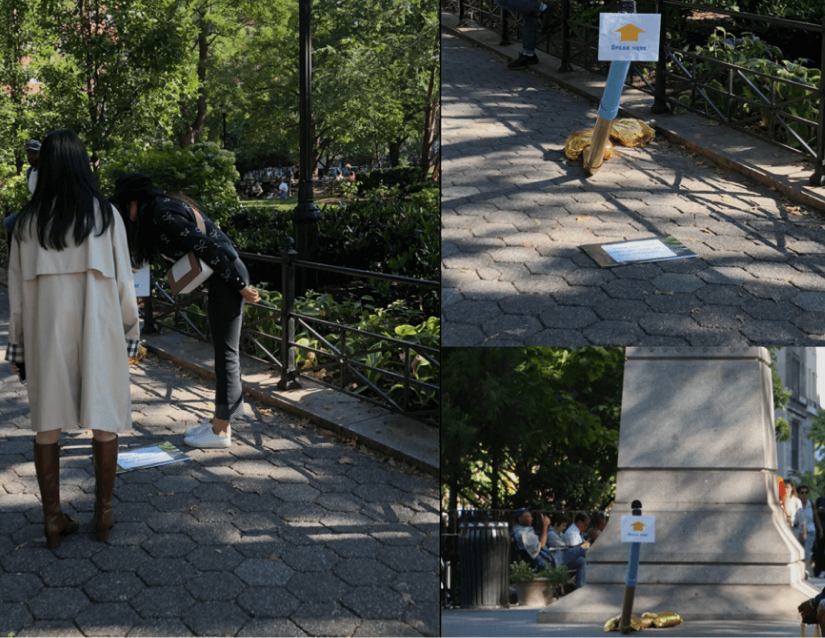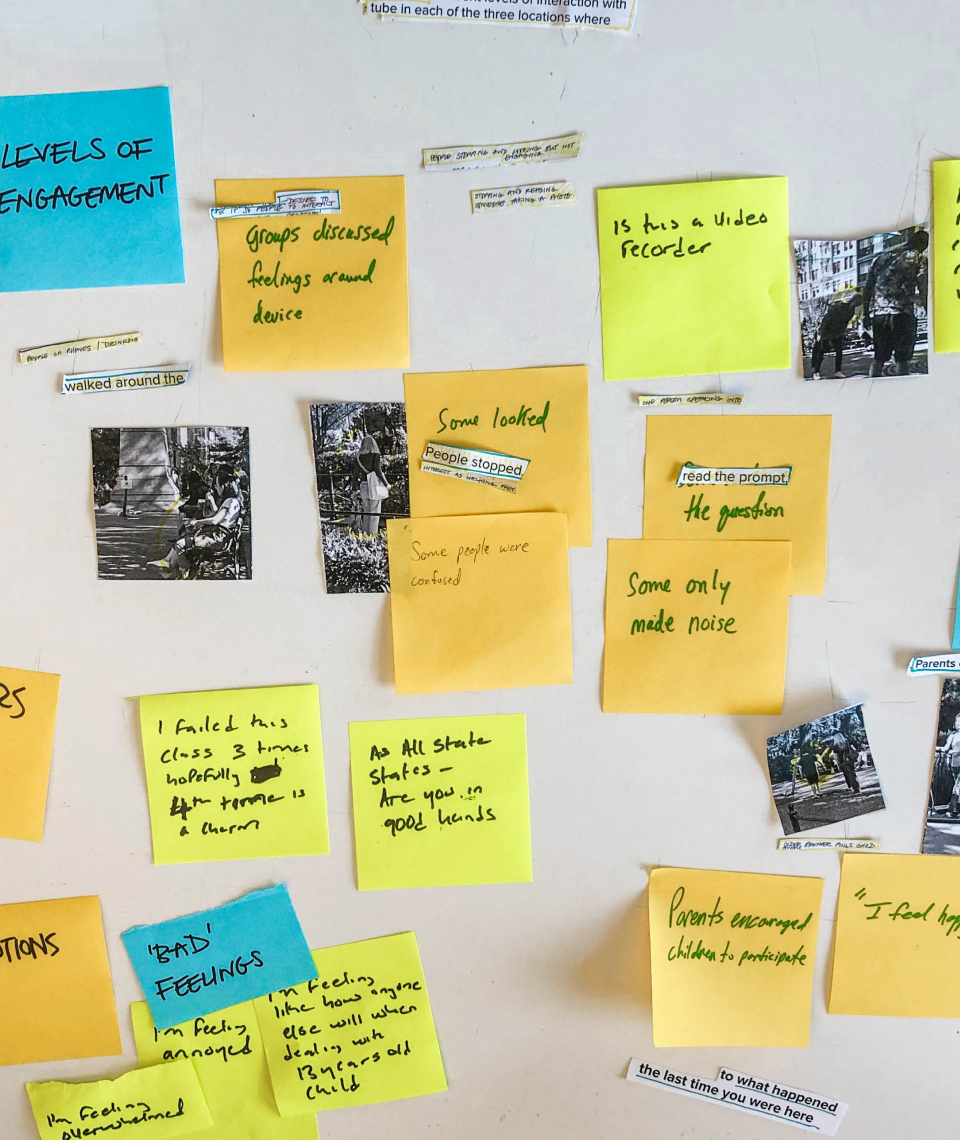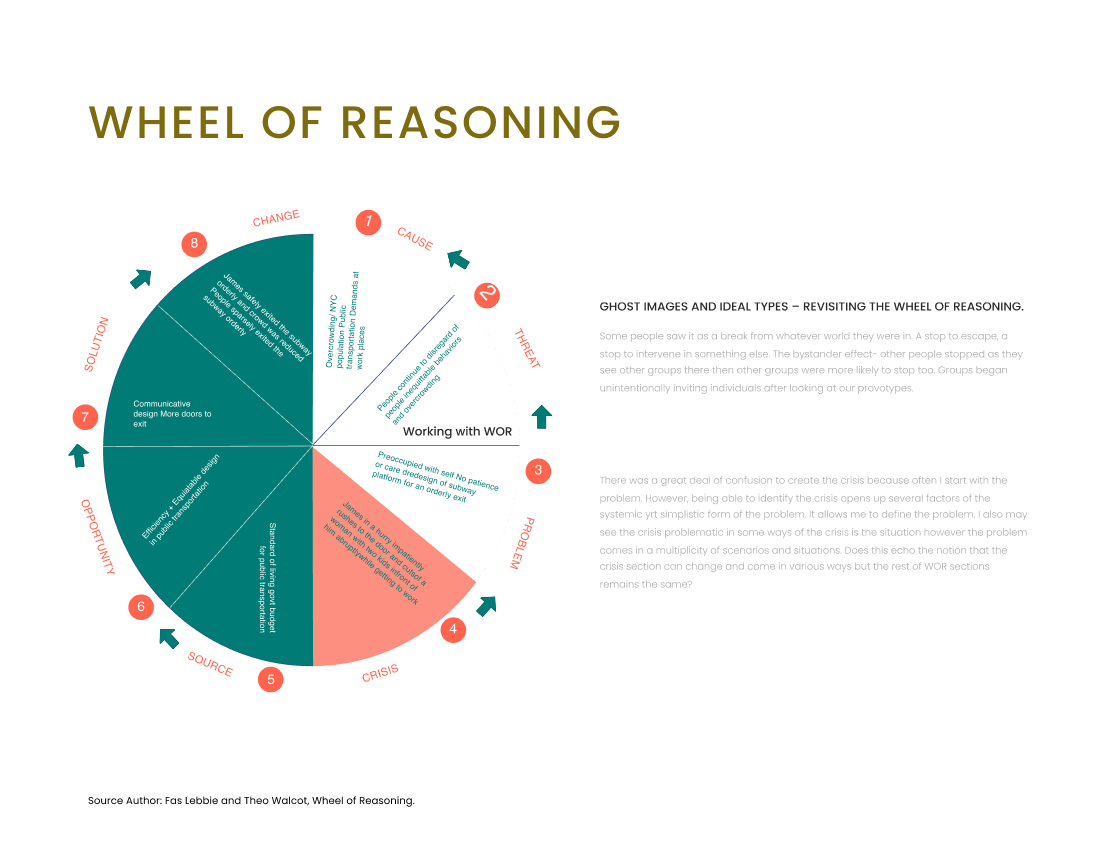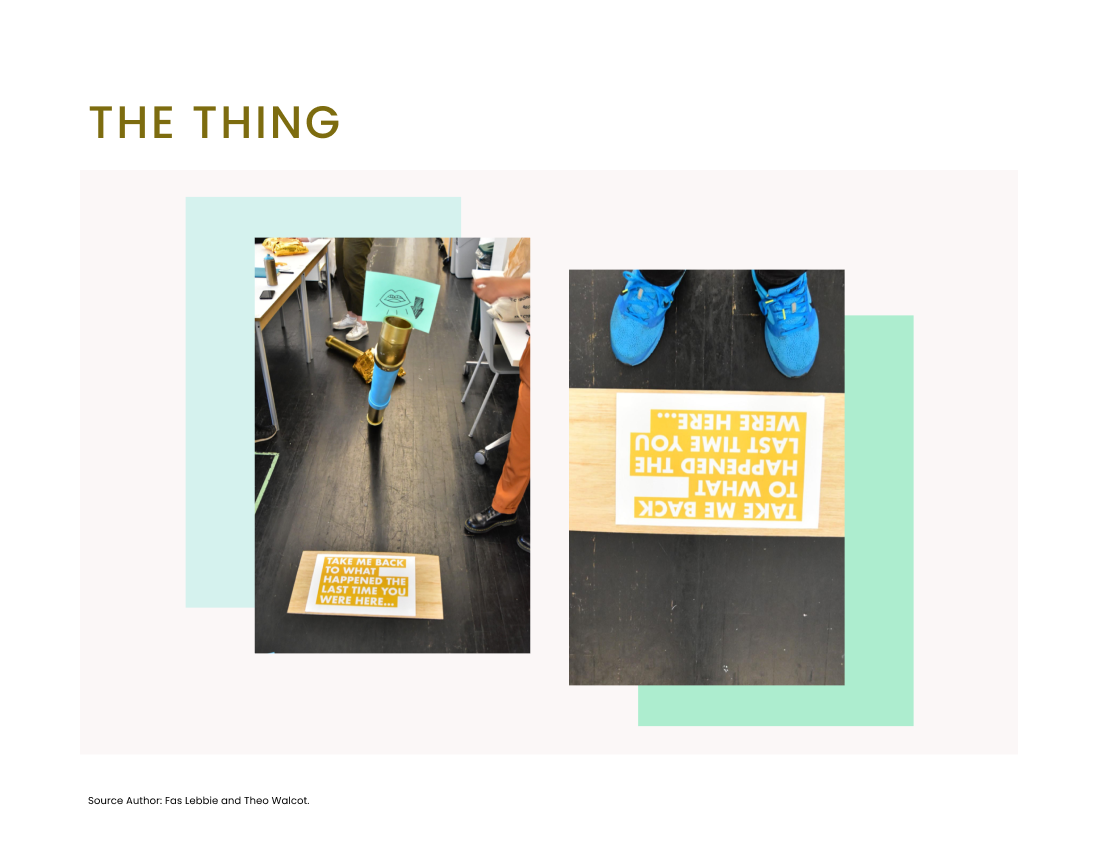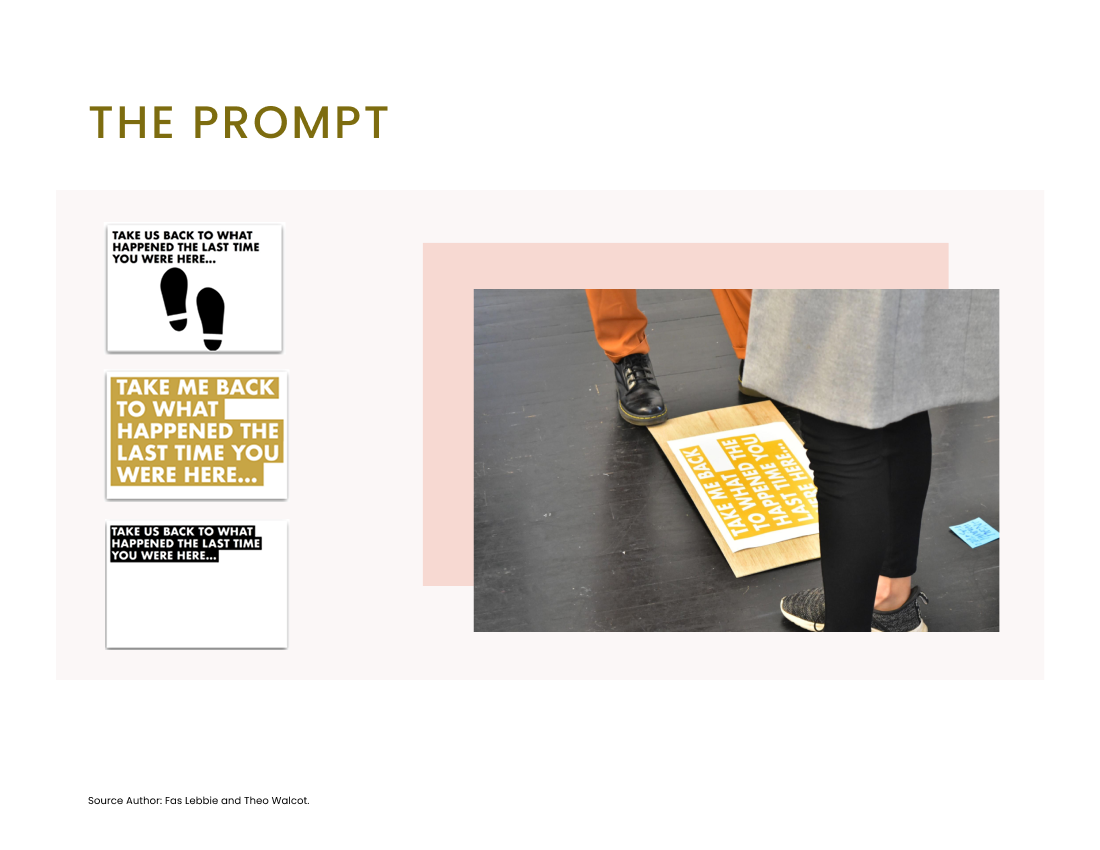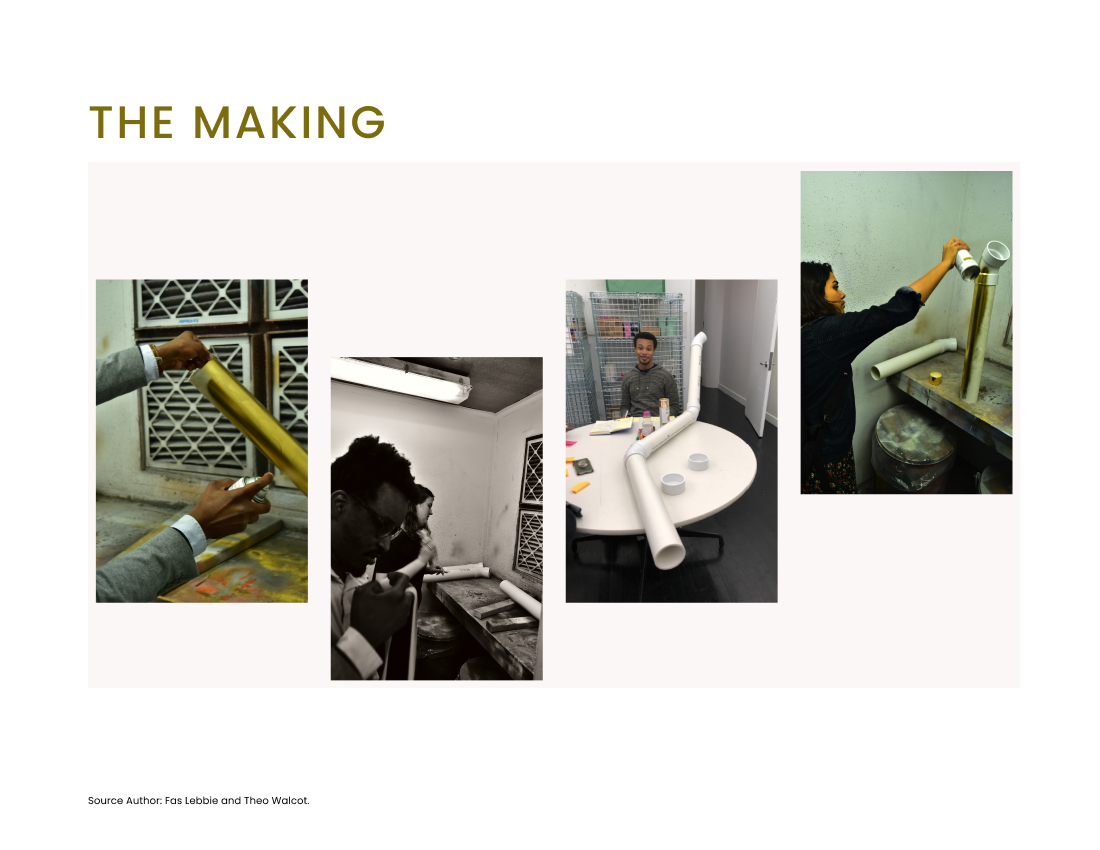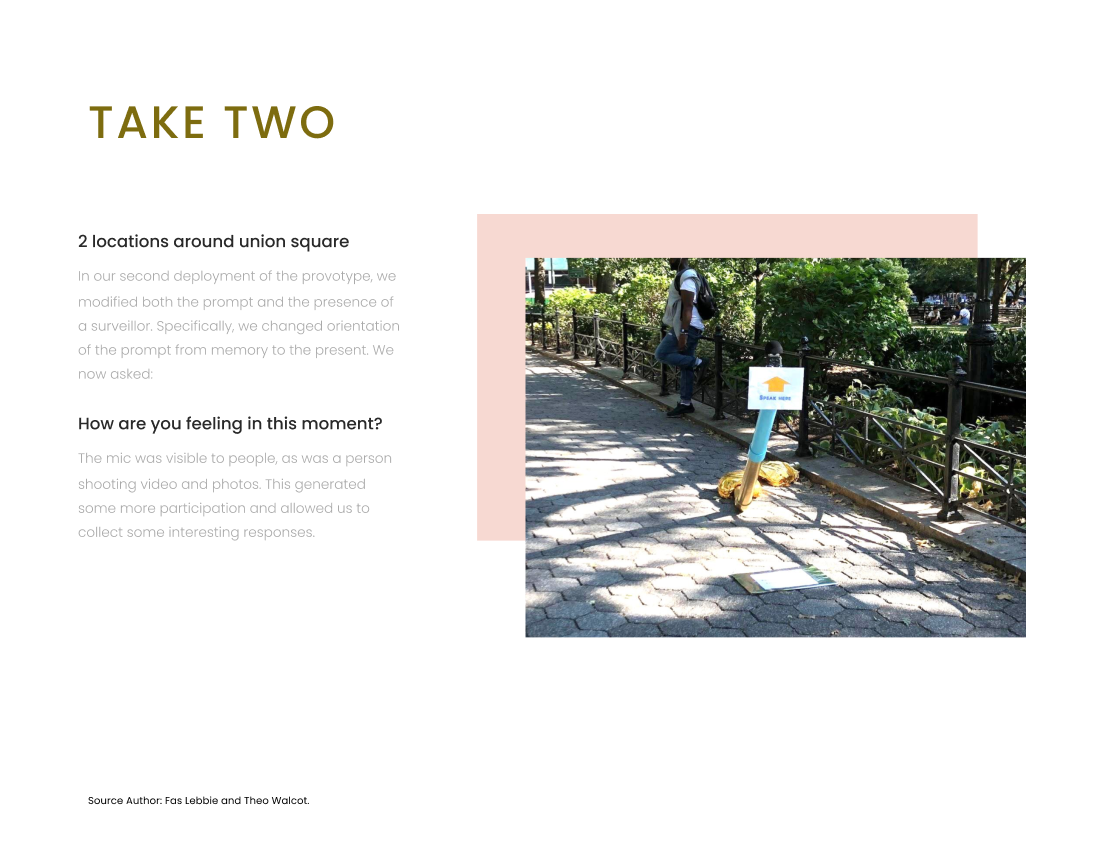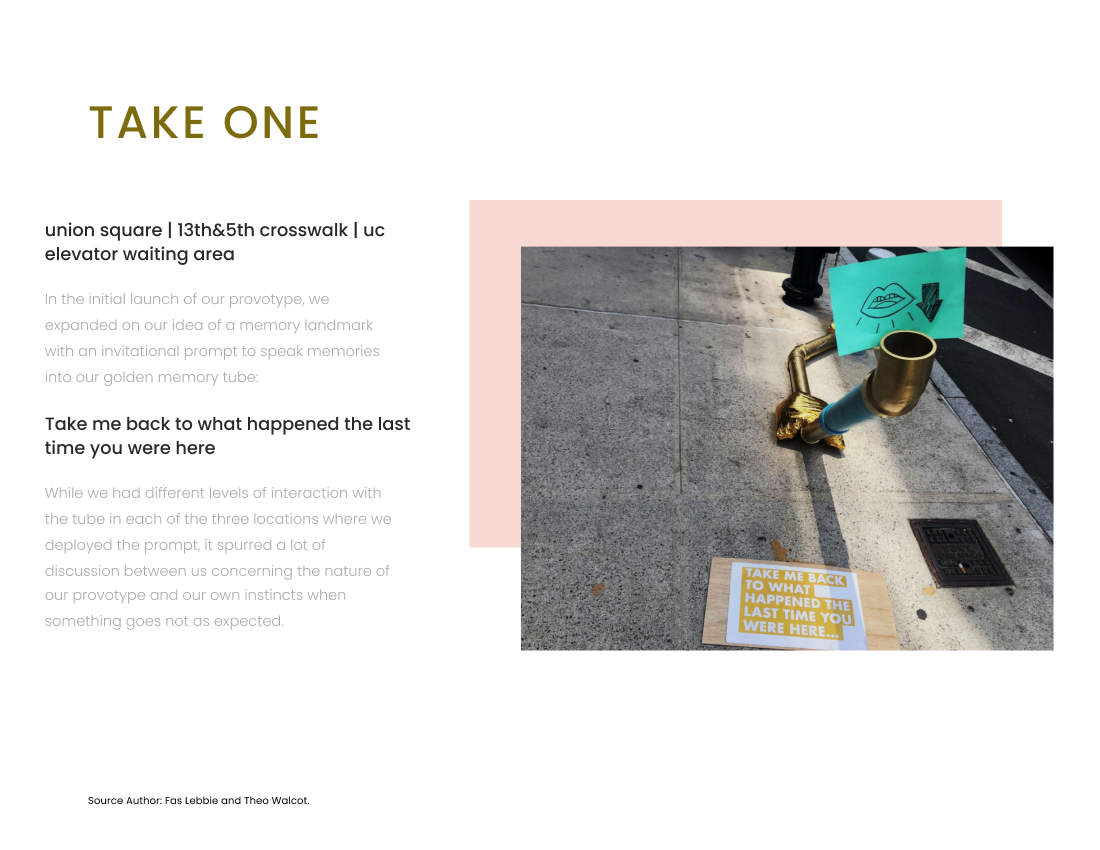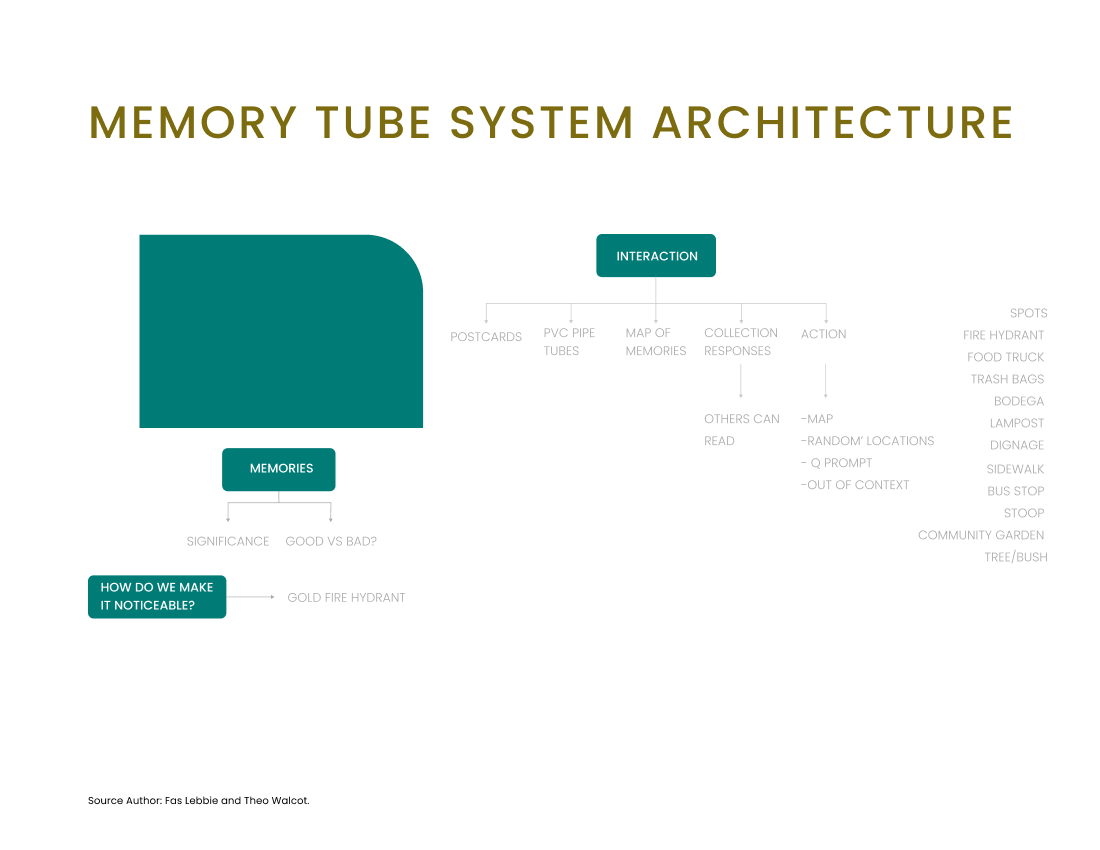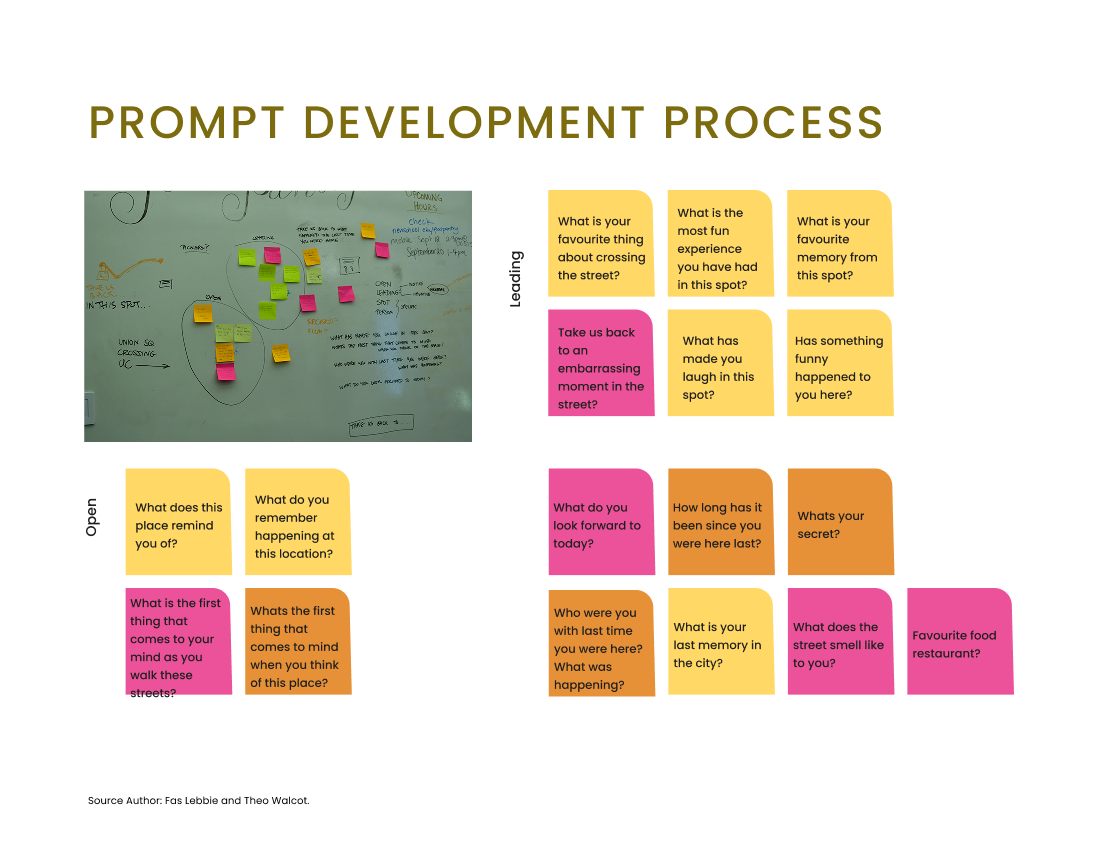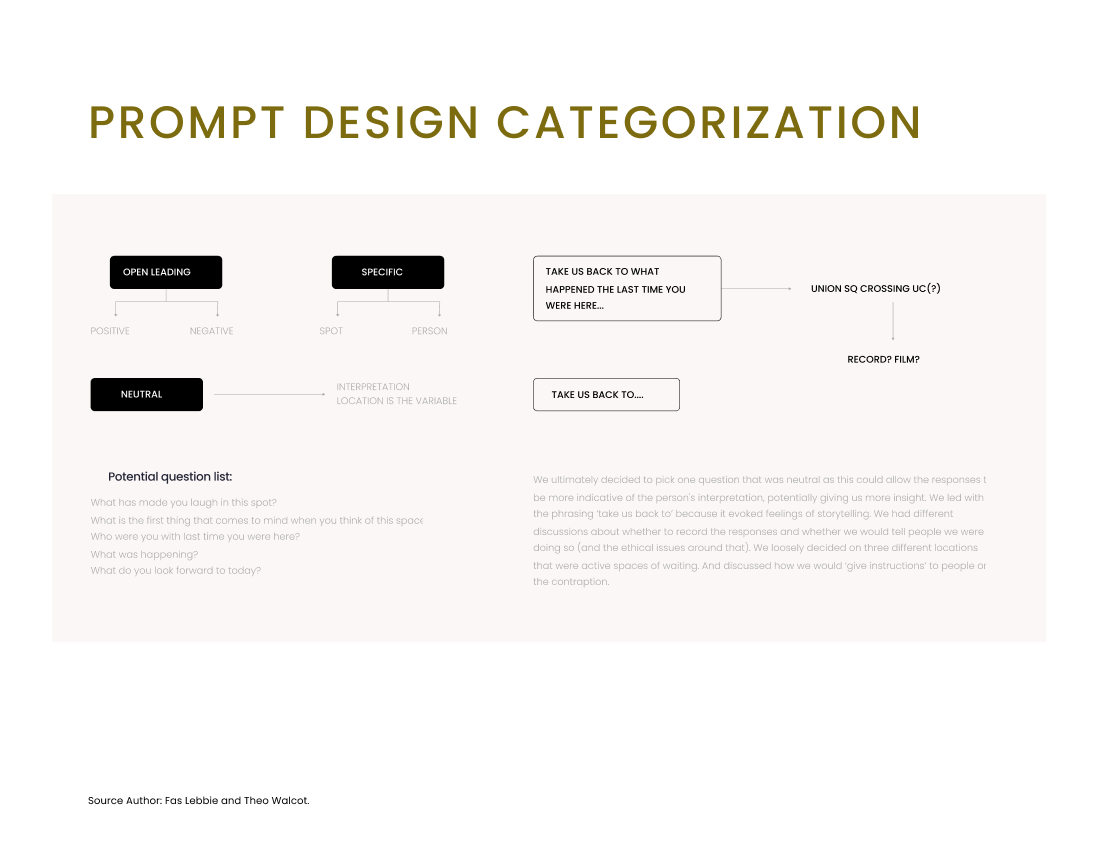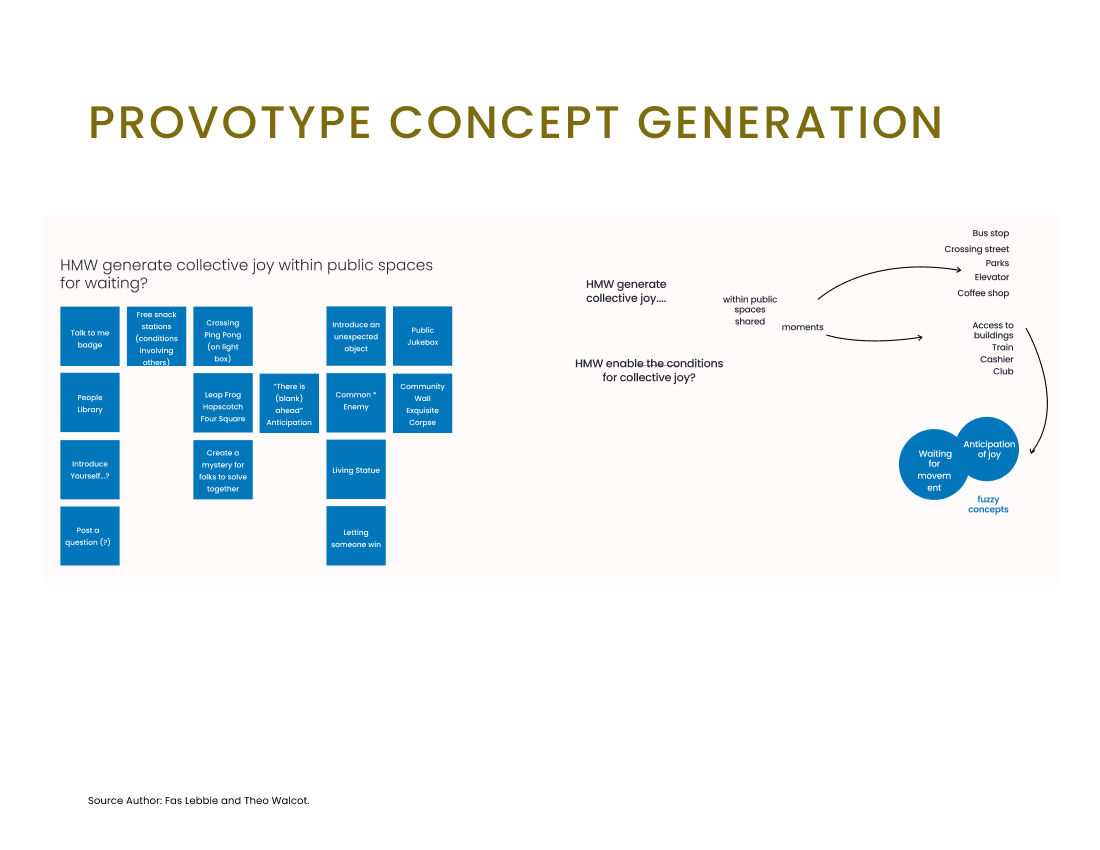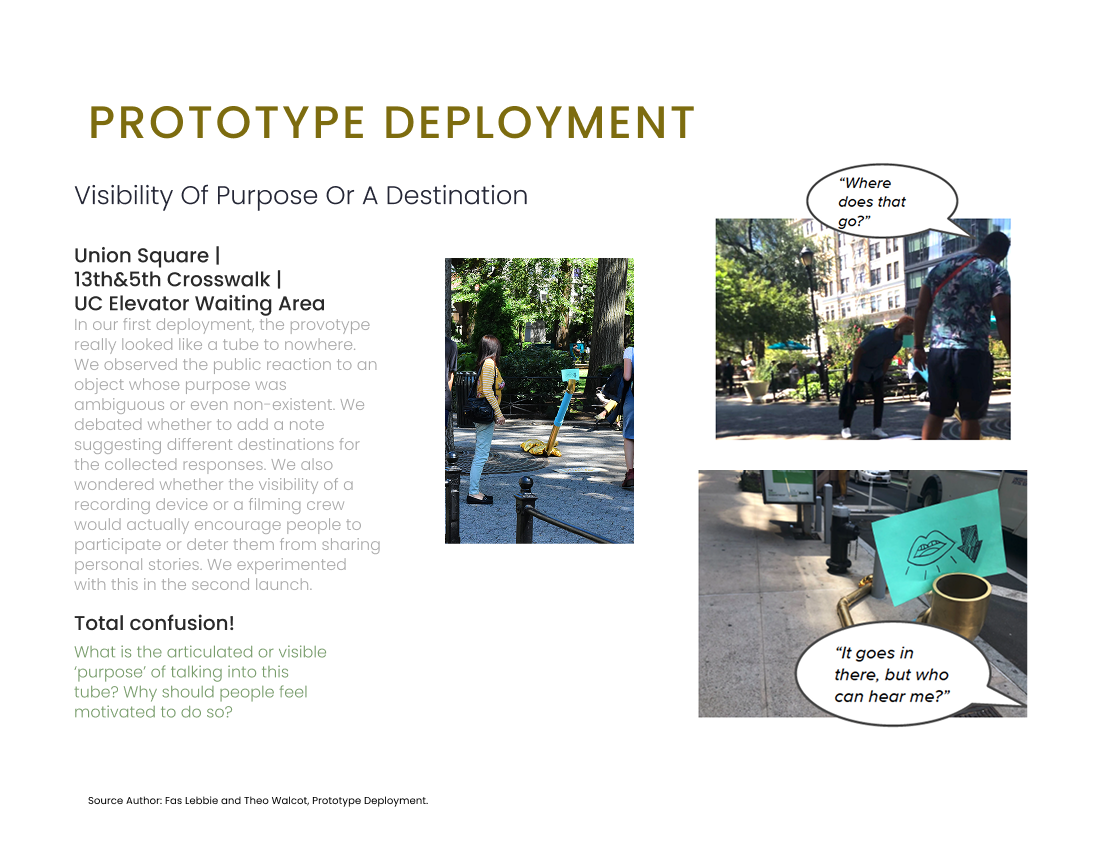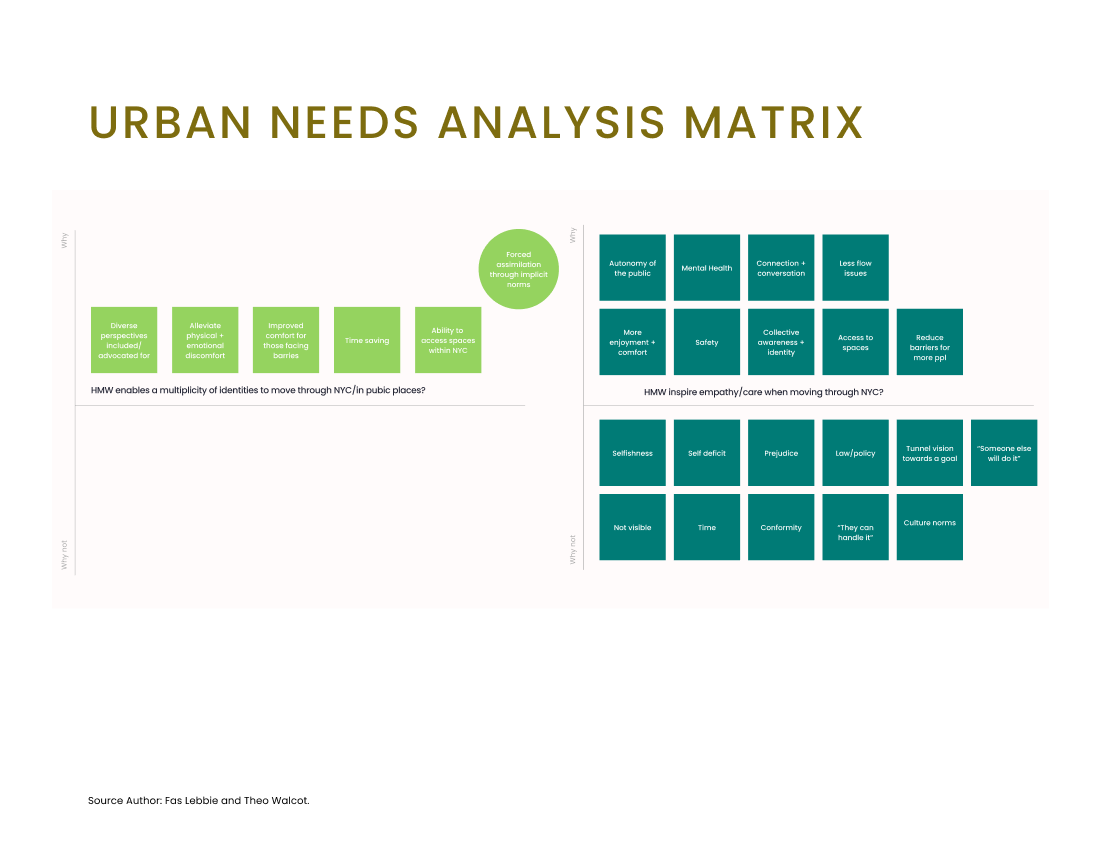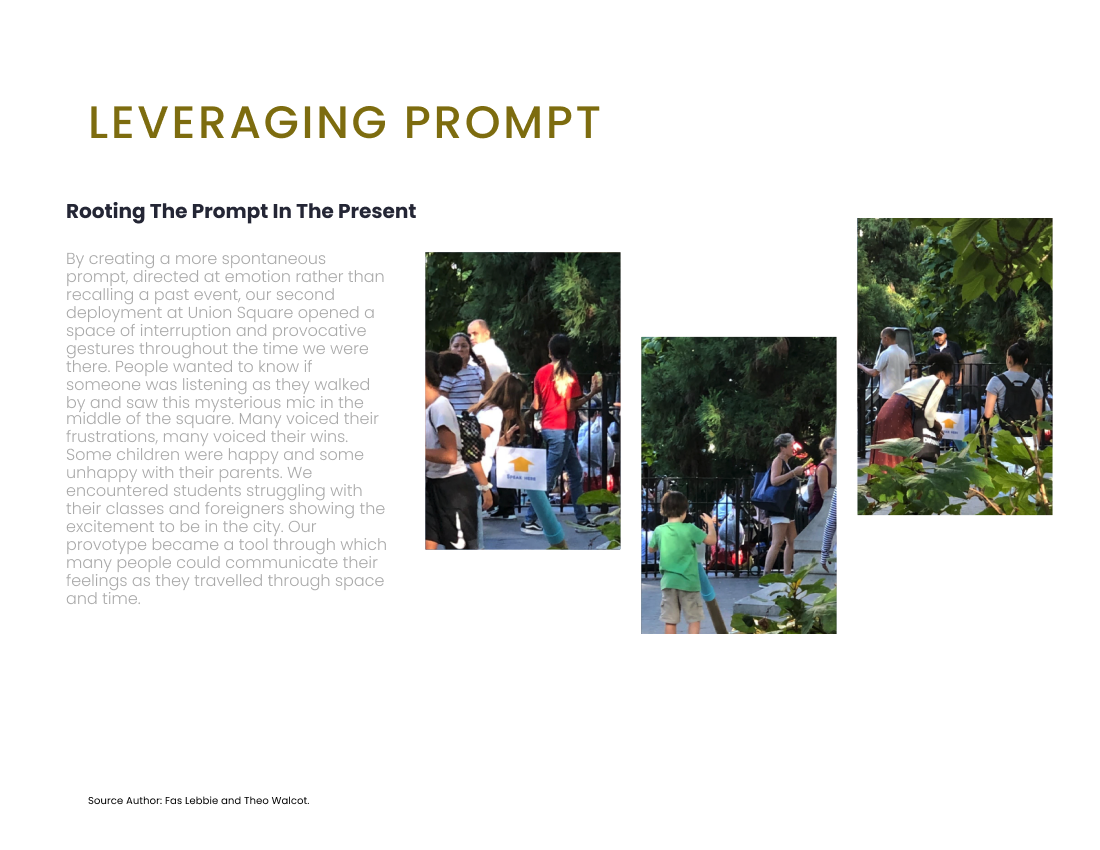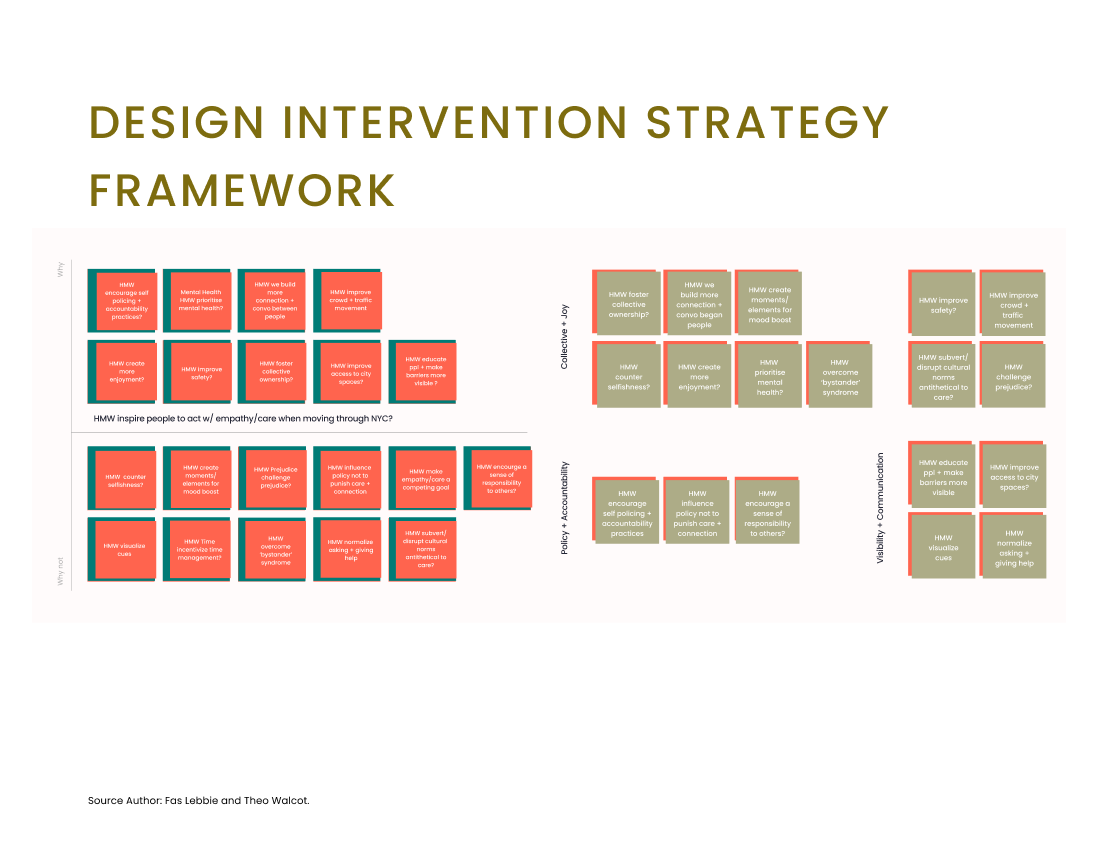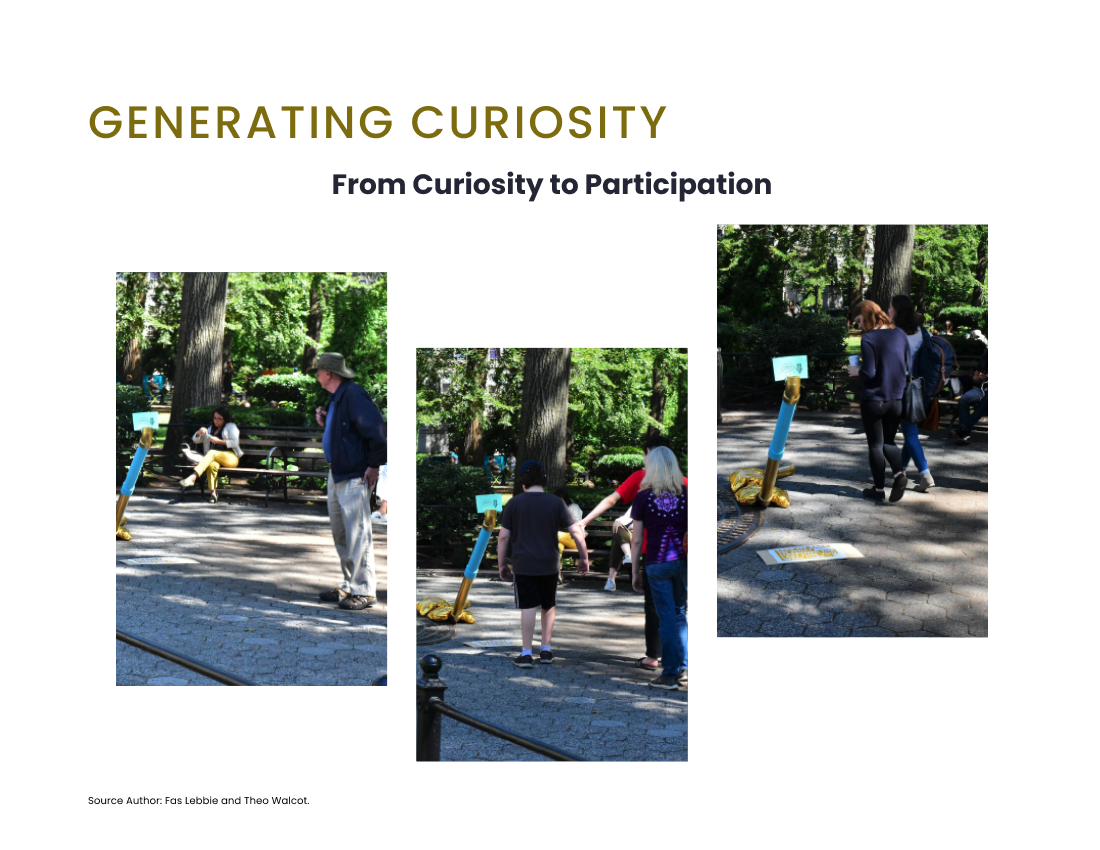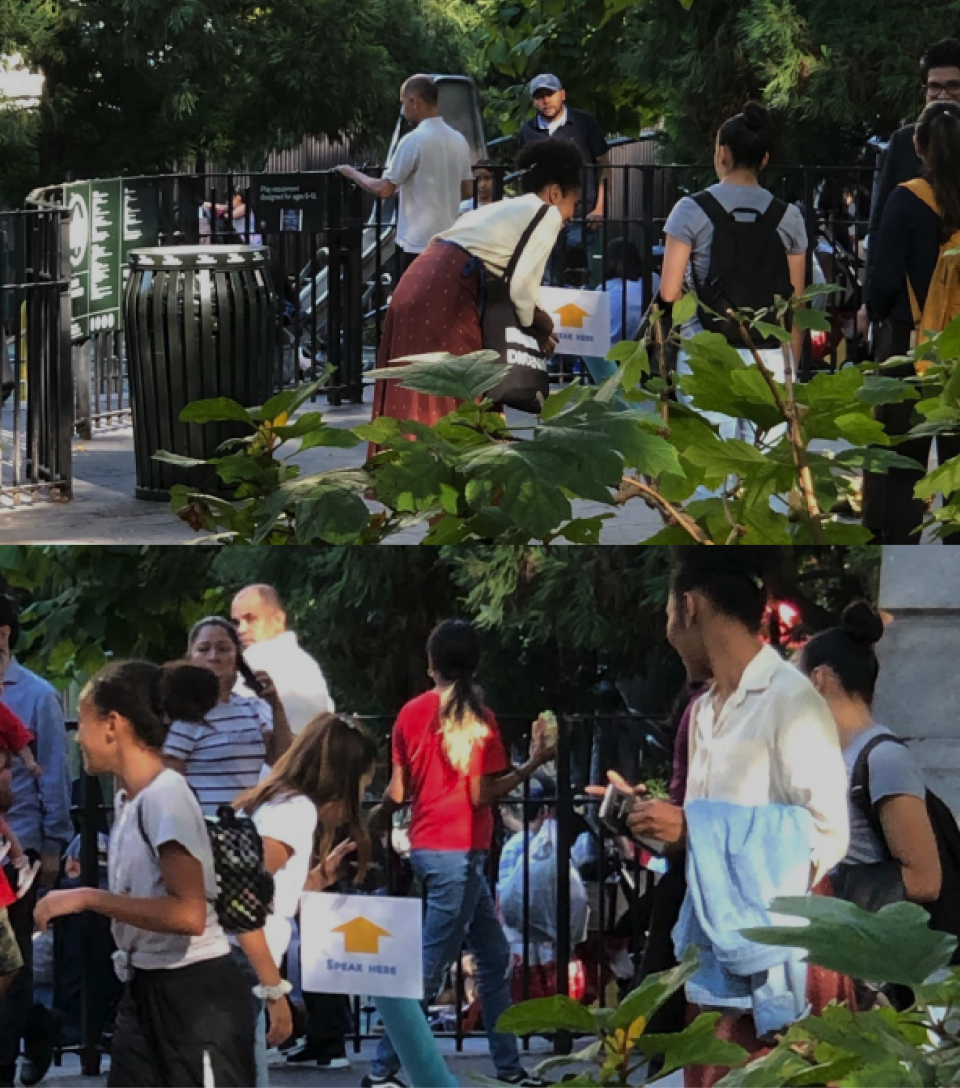Our methodology centered on Frayling’s “research through design” approach, where the design process itself served as our investigative method. Rather than merely gathering information to inform a final design (research for design) or analyzing existing design approaches (research into the design), we used the creation and iteration of provocative prototypes—”provotypes”—as our primary means of generating knowledge. The Memory Tube wasn’t simply a solution to be implemented but a research instrument that evolved through multiple iterations. Each deployment generated new insights that informed subsequent design decisions, creating a cyclical process of making, observing, analyzing, and remaking. This approach allowed us to document the design process itself as a form of action research, with each iteration revealing new dimensions of urban social behavior. By treating our artifacts as both the means and subject of investigation, we generated knowledge that would have been inaccessible through traditional observational research alone. The Memory Tube became a boundary object that mediated interactions between researchers and participants, creating a space for spontaneous and authentic expressions that revealed underlying patterns of urban social dynamics. We developed three potential provotype directions—Wait + Play (interactive games at crosswalks), Memory Landmarks (storytelling around everyday urban objects), and Common Enemy (using shared mild discomfort to unite strangers). After evaluating each concept for feasibility, impact potential, and ethical considerations, we selected Memory Landmarks as our primary direction. Our research strategy employed a provocative prototyping approach, where we created deliberately ambiguous artifacts designed to “kick up dust” rather than solve clearly defined problems. We developed a distinctive golden tube installation with carefully crafted prompts to encourage sharing and reflection. The visual design was intentionally intriguing but ambiguous enough to invite curiosity and investigation. We deployed these installations across multiple locations and documented interactions through photography, video ethnography, audio recording, field notes, and artifact responses. This multi-modal documentation allowed us to capture what people said and how they approached the installation, their hesitations, and the social dynamics that emerged around the artifact.
